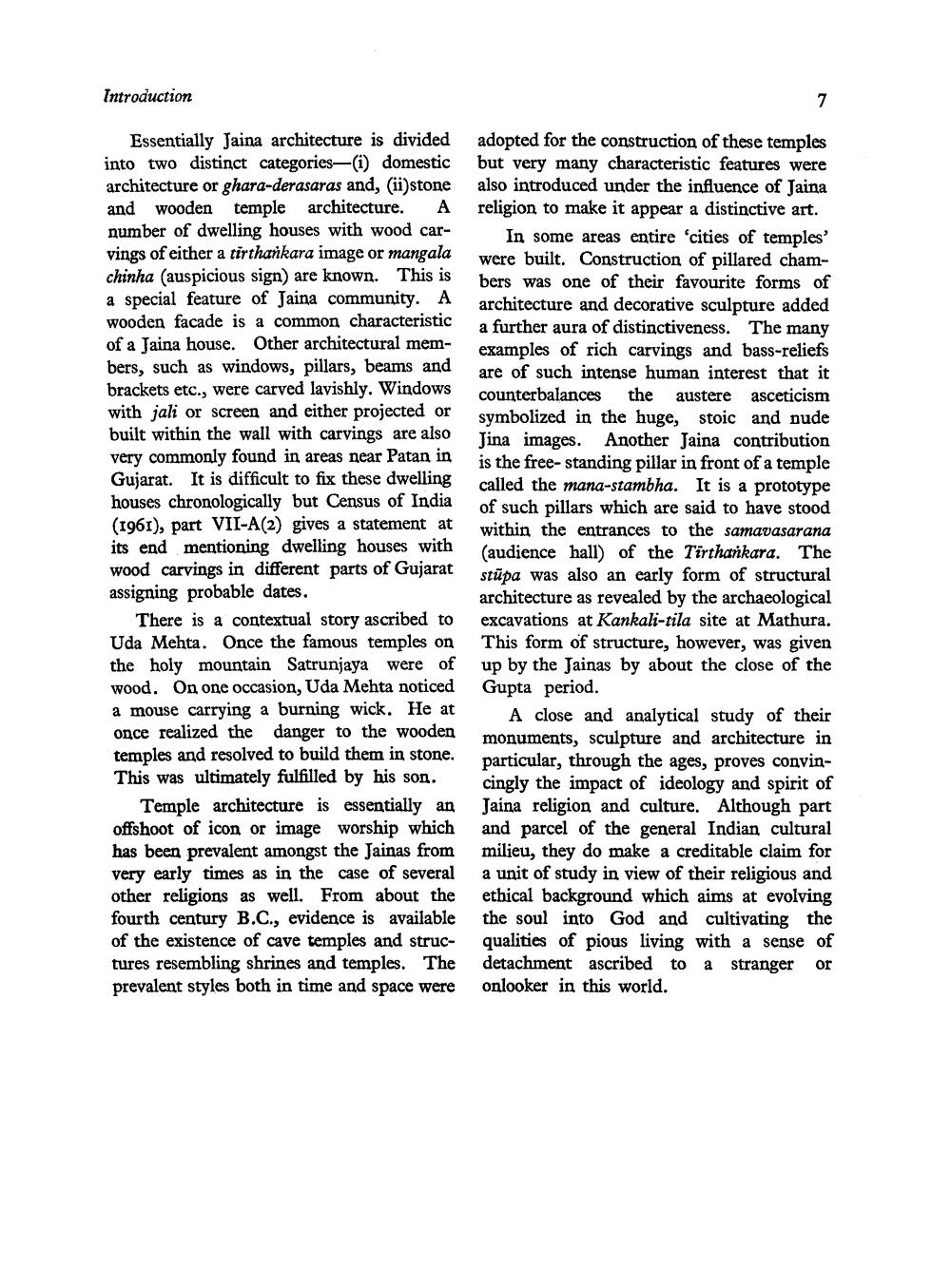________________
Introduction
7
Essentially Jaina architecture is divided into two distinct categories— (i) domestic architecture or ghara-derasaras and, (ii)stone and wooden temple architecture. A number of dwelling houses with wood carvings of either a tirthankara image or mangala chinha (auspicious sign) are known. This is a special feature of Jaina community. A wooden facade is a common characteristic of a Jaina house. Other architectural members, such as windows, pillars, beams and brackets etc., were carved lavishly. Windows with jali or screen and either projected or built within the wall with carvings are also very commonly found in areas near Patan in Gujarat. It is difficult to fix these dwelling houses chronologically but Census of India (1961), part VII-A(2) gives a statement at its end mentioning dwelling houses with wood carvings in different parts of Gujarat assigning probable dates.
There is a contextual story ascribed to Uda Mehta. Once the famous temples on the holy mountain Satrunjaya were of wood. On one occasion, Uda Mehta noticed a mouse carrying a burning wick. He at once realized the danger to the wooden temples and resolved to build them in stone. This was ultimately fulfilled by his son.
Temple architecture is essentially an offshoot of icon or image worship which has been prevalent amongst the Jainas from very early times as in the case of several other religions as well. From about the fourth century B.C., evidence is available of the existence of cave temples and struc- tures resembling shrines and temples. The prevalent styles both in time and space were
adopted for the construction of these temples but very many characteristic features were also introduced under the influence of Jaina religion to make it appear a distinctive art.
In some areas entire cities of temples' were built. Construction of pillared chambers was one of their favourite forms of architecture and decorative sculpture added a further aura of distinctiveness. The many examples of rich carvings and bass-reliefs are of such intense human interest that it counterbalances the austere asceticism symbolized in the huge, stoic and nude Jina images. Another Jaina contribution is the free-standing pillar in front of a temple called the mana-stambha. It is a prototype of such pillars which are said to have stood within the entrances to the samavasarana (audience hall) of the Tirthankara. The stūpa was also an early form of structural architecture as revealed by the archaeological excavations at Kankali-tila site at Mathura. This form of structure, however, was given up by the Jainas by about the close of the Gupta period.
A close and analytical study of their monuments, sculpture and architecture in particular, through the ages, proves convincingly the impact of ideology and spirit of Jaina religion and culture. Although part and parcel of the general Indian cultural milieu, they do make a creditable claim for a unit of study in view of their religious and ethical background which aims at evolving the soul into God and cultivating the qualities of pious living with a sense of detachment ascribed to a stranger or onlooker in this world.




